Satellite Docking Experiment (SpaDeX)
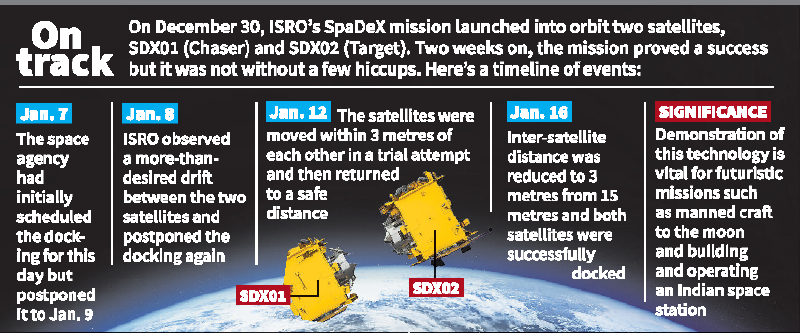
- 17 Jan 2025
In News:
The Indian Space Research Organisation (ISRO) achieved a historic milestone by successfully executing a satellite docking experiment, making India the fourth country after the United States, Russia, and China to accomplish this feat. This advancement represents a significant leap in India's space capabilities, positioning the nation at the forefront of space exploration and in-orbit servicing.
Key Highlights:
- The Space Docking Experiment (SpaDeX) is a critical technological demonstration by ISRO aimed at developing autonomous docking and undocking capabilities in space.
- The mission involves two satellites, SDX01 (Chaser) and SDX02 (Target), which were launched aboard PSLV C60 on December 30, 2024.
- The docking maneuver was overseen by the Mission Operations Complex (MOX) at the ISRO Telemetry, Tracking, and Command Network (ISTRAC) and was successfully completed in the early hours of January 18, 2025.
Key Steps in the Docking Process:
- Manoeuvre from 15m to 3m hold point.
- Precision docking initiation, leading to spacecraft capture.
- Retraction and rigidization for stability.
- Successful control of the docked satellites as a single object.
Significance of the Mission
- Technological Advancement: The docking of two spacecraft in orbit is a crucial capability that paves the way for:
- Autonomous spacecraft operations
- Refueling and maintenance of satellites
- Space station development
- Lunar and interplanetary missions
Future Applications
- Manned Missions: Enables India to develop technology for manned lunar missions and future space station operations.
- Satellite Servicing: Allows repair, maintenance, and extension of satellite lifespan, reducing costs and space debris.
- Sample Return Missions: Essential for lunar and planetary sample retrieval, crucial for deep-space exploration.
Challenges and Overcoming Setbacks
The SpaDeX docking was initially scheduled for January 7, 2025, but was postponed due to the need for further ground validation and an unexpected drift between the satellites. The issue was later resolved, and the docking was executed with precision.
The Road Ahead
Undocking and Power Transfer Demonstration
- ISRO will follow up with power transfer checks between the docked satellites.
- The satellites will later undock and operate separately for the remaining mission duration of up to two years.
Expanding Space Capabilities
- The successful execution of SpaDeX aligns with India’s plans for an independent space station by the 2030s.
- Strengthens India’s position in international space collaborations and commercial space services.
Conclusion
The SpaDeX mission represents a landmark achievement for India’s space program, placing it among the elite nations capable of satellite docking. This breakthrough will serve as a foundation for India’s ambitious future missions, including deep-space exploration, human spaceflight, and interplanetary research. As ISRO continues to develop advanced space technologies, India is set to play a crucial role in the future of global space exploration.
Artificial Solar Eclipse: Why Are Satellites Trying to Block the Sun?
- 14 Dec 2024
Introduction
The European Space Agency (ESA) has launched Proba-3, a mission that will create an artificial solar eclipse to study the Sun's atmosphere, known as the corona. This mission aims to demonstrate new technology and address unresolved questions about the Sun's outer layers.
What is an Artificial Solar Eclipse?
- Definition: An artificial solar eclipse mimics the natural phenomenon where the moon blocks sunlight, allowing detailed observation of the Sun’s corona.
- Created By: The eclipse is created by two satellites, which align to block the Sun's light and generate a controlled shadow for scientific study.
- Purpose: The goal is to study the Sun’s corona, particularly to understand why it is significantly hotter than the Sun’s surface.
How Does the Proba-3 Create an Eclipse?
Launch and Spacecraft
Proba-3 was launched on December 5 from the Satish Dhawan Space Centre in India. The mission uses two satellites:
- Coronagraph Spacecraft (CSC): This spacecraft guides the other satellite.
- Occulter Spacecraft (OSC): This satellite has a disk that creates a controlled shadow onto the CSC.
Formation Flying
Using Precise Formation Flying (PFF) technology, the two spacecraft maintain a precise distance of 150 meters (492 feet) apart, aligning perfectly with the Sun. This alignment mimics the effect of a solar eclipse.
Precision Requirements
The eclipse will need to maintain millimetre-level accuracy for up to six hours per orbit to provide scientists with stable observational conditions.
Mission Goals
- Demonstrating PFF Technology: One of the primary objectives of the Proba-3 mission is to demonstrate PFF technology. This involves using GPS and inter-satellite radio links for positioning, as well as maintaining a precise distance between the two spacecraft.
- Studying the Sun’s Corona: Another goal is to understand why the corona is hotter than the Sun's surface. The onboard instruments, including a coronagraph, will help with this research. The coronagraph will block out the Sun’s bright light, enabling clearer observations of the corona.
- ASPICCS Coronagraph: The Proba-3 coronagraph, named the Association of Spacecraft for Polarimetric and Imaging Investigation of the Corona of the Sun (ASPICCS), is designed to observe the corona in high detail, mimicking the observational conditions of a total solar eclipse.
Why Is This Such a Big Deal?
- Revealing the Sun’s Corona: The Sun’s corona is typically invisible because it is much less bright than the Sun’s surface. It can only be seen during a solar eclipse when the Moon blocks the Sun's light.
- Predicting Space Weather: Studying the corona helps scientists predict space weather and geomagnetic storms, which can disrupt satellites and other systems on Earth.
- Extended Observations: Unlike natural solar eclipses, which last only a few minutes, Proba-3 can provide six hours of observation time in each orbit (approximately 19 hours and 36 minutes), allowing for continuous study of the corona.
What is Precise Formation Flying (PFF) Technology?
- Definition: PFF technology allows satellites to maintain exact positions and orientations relative to each other in orbit.
- Mechanism: The technology uses GPS, inter-satellite radio links, and automated control systems to ensure alignment.
- Implementation in Proba-3: In the Proba-3 mission, the Coronagraph and Occulter spacecraft stay 150 meters apart, using PFF to maintain millimetre-level precision, which is crucial for simulating a solar eclipse.
- Benefits: PFF enhances mission accuracy and provides a platform for advanced observational techniques that will enable more detailed studies of the Sun's corona.
Conclusion
Proba-3 is a groundbreaking mission that will offer unprecedented insights into the Sun’s corona by simulating solar eclipses using advanced satellite technology. By studying the Sun’s outer layers, scientists aim to improve our understanding of space weather and the mysterious temperature anomaly of the corona.
Biomedical Waste Regulations
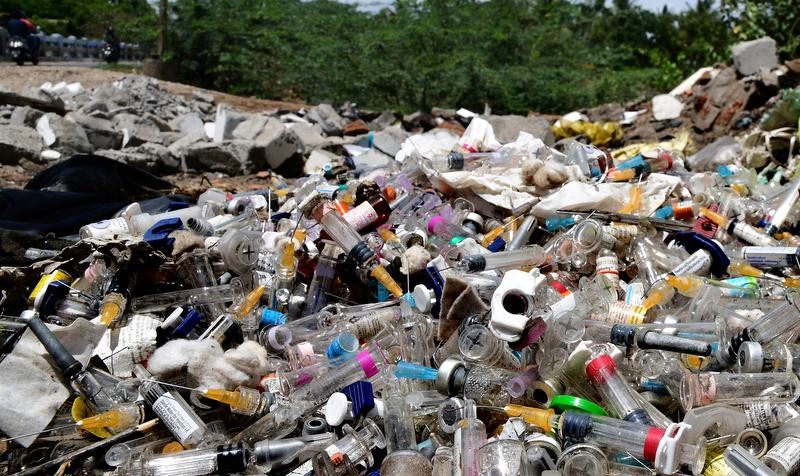
- 30 Nov 2024
The Emergence of HIV and Global Panic
In 1983, scientists Luc Montagnier and Robert Gallo independently identified the virus responsible for AIDS. By the mid-1980s, HIV/AIDS was perceived as a biological death sentence, with the virus primarily attacking immune cells, making medical intervention difficult. The epidemic quickly became associated with fear, ignorance, and stigma, as it was often linked to marginalized groups.
The "Syringe Tide" Incident and Public Outrage
In August 1987, the U.S. faced a public health crisis when discarded medical waste, including syringes and blood vials, washed up on beaches along the Atlantic coast. Known as the "Syringe Tide," this incident shocked the public and fueled anxiety, especially when children were seen playing with syringes. Traced to improper waste disposal in New York City, the event highlighted the hazardous nature of medical waste, which had been previously underestimated. Combined with the HIV/AIDS epidemic, this incident amplified public fear and economic losses of up to $7.7 billion due to the decline in tourism.
U.S. Response: Medical Waste Tracking Act of 1988
The widespread outrage led to the U.S. government passing the Medical Waste Tracking Act in 1988. This was the first law to formally categorize hospital waste as hazardous. The Act introduced stringent guidelines for the handling, transportation, and disposal of medical waste, establishing systemic regulation and oversight. It marked a significant turning point in both public health and environmental safety, changing how medical waste was managed in the healthcare sector.
India’s Journey in Biomedical Waste Management
Initial Steps and Delays
While the U.S. responded swiftly to the crisis, India’s approach to managing biomedical waste was slower. In 1986, India enacted the Environmental Protection Act, which marked the country’s first significant step towards environmental conservation. That same year, India identified its first HIV case. However, biomedical waste was not yet recognized as hazardous, and the Hazardous Waste (Management and Handling) Rules of 1989 failed to address the issue. As a result, local bodies were left to manage waste disposal, leading to inefficiencies.
Judicial Intervention and Legislative Action
In the 1990s, as pollution levels rose, particularly in urban areas like Delhi, the inadequacies of the system became apparent. In the landmark case Dr. B.L. Wadehra vs. Union of India (1996), the Supreme Court criticized Delhi’s waste management system, calling the city an "open garbage dump." This judgment led to a nationwide conversation on waste management and resulted in the Biomedical Waste (Management and Handling) Rules of 1998, marking the formal recognition of hospital waste as hazardous. The rules empowered the Central and State Pollution Control Boards to regulate waste disposal, ensuring accountability.
The Link Between HIV and Biomedical Waste Regulations
The HIV crisis highlighted the need for safe disposal practices to protect the environment and healthcare workers. While India charted its own course, the global response to HIV, particularly the U.S. model, influenced India’s approach to biomedical waste management. Over the years, India has made significant progress, with amendments to the rules in 2016 and 2020 to improve waste management technology and ensure safe disposal.
Current Challenges and Progress
- Ongoing Issues in Biomedical Waste Management: Despite significant progress, challenges remain, especially in rural and resource-limited areas. Mishandling of biomedical waste continues to pose risks, and healthcare professionals still face occupational hazards. Gaps in compliance and awareness persist, but the system’s progress is undeniable.
Conclusion
The HIV/AIDS epidemic, while tragic, indirectly led to significant improvements in healthcare waste management. As the crisis highlighted the dangers of improper waste disposal, it spurred legislative and systemic changes that have contributed to safer healthcare environments. The progress in biomedical waste management demonstrates that crises can often lead to long-term improvements.
Reimagining Governance with AI: The Promise of GovAI

- 20 Nov 2024
In News:
India's rapid digital transformation, coupled with the advancements in Artificial Intelligence (AI), presents a unique opportunity to reimagine governance. The concept of GovAI—using AI to enhance public administration—holds the potential to revolutionize governance, improve efficiency, and create more responsive and inclusive public systems.
Digital Transformation in Governance
- Evolution of Digital Public Infrastructure (DPI)
- Over the past decade, India has made significant strides in digital governance through the development of Digital Public Infrastructure (DPI). DPI has reduced inefficiencies, enhanced transparency, and improved service delivery, transforming India's governance landscape.
- Impact of AI on Governance
- As AI becomes a critical enabler in various sectors, its application to governance promises to deliver more efficient, inclusive, and responsive government services. The potential of AI lies in its ability to provide more with less, driving innovation across key public services.
Key Trends Driving GovAI
- Rapid Digitalization of India
- Currently, 90 crore Indians are connected to the Internet, with projections indicating 120 crore by 2026, positioning India as the most connected country globally.
- Digitalization serves as the backbone for AI-driven governance, enabling efficient data collection, analysis, and informed policy-making.
- Data as a Valuable Resource
- The rapid digitalization of India has led to the generation of vast amounts of data. This data serves as the fuel for AI models, which can be used to enhance governance.
- Programs like the IndiaDatasetsProgramme aim to harness government datasets for AI development while safeguarding data privacy through legislation.
- Demand for Efficient Governance
- The post-COVID world has underscored the need for governments to deliver better outcomes with fewer resources. AI has the potential to optimize the use of public resources, enabling more efficient and targeted governance.
India’s Leadership in AI-Driven Governance
- Positioning India as a Global Leader
- India’s digital governance initiatives have placed it at the forefront of AI adoption in the public sector. Through GovAI, India can solidify its position as a global leader in using technology for public good.
- As the Chair of the Global Partnership on AI (GPAI), India is advocating for the inclusive development of AI to ensure that it benefits all nations, not just a select few.
- Role of Innovation Ecosystem
- India’s innovation ecosystem, comprising startups, entrepreneurs, and tech hubs, can play a crucial role in driving the development of AI models, platforms, and apps for governance.
- A strong partnership between the government and private sector is essential to successfully deploy AI solutions across various sectors of governance.
Potential Benefits of GovAI
- Enhanced Efficiency and Service Delivery
- AI-powered tools, such as chatbots, can provide citizens with 24/7 assistance, streamlining public service delivery and reducing waiting times.
- AI can help in automating processes and improving the overall efficiency of government operations.
- Data-Driven Decision-Making
- AI can analyze large datasets to make informed policy decisions and design targeted interventions in sectors like healthcare, education, and social welfare.
- Data-driven insights can enhance the effectiveness of welfare schemes, improving outcomes for marginalized communities.
- Increased Transparency and Accountability
- AI can enhance transparency in governance by minimizing human intervention in processes, thus reducing corruption and ensuring efficient use of public resources.
- Predictive analytics and real-time data monitoring can enable proactive governance, preventing issues before they escalate.
Challenges and Drawbacks of GovAI
- Privacy Concerns
- The use of AI in governance requires the collection and analysis of vast amounts of personal data, raising concerns about data privacy and surveillance.
- Robust data protection laws must be enforced to ensure citizens' data is handled responsibly.
- Accountability and Bias
- AI systems may produce biased outcomes depending on the data they are trained on. Ensuring accountability for decisions made by AI systems remains a challenge, particularly when errors or biases occur.
- Transparent mechanisms must be established to hold AI systems accountable for their actions.
- Increased State Control and Surveillance
- The integration of AI in governance could lead to increased state control, potentially compromising individual freedoms. Ensuring that AI is used responsibly to balance power between the government and citizens is critical.
- Digital Divide
- The benefits of AI in governance may not be evenly distributed across the population, exacerbating the digital divide.
- Efforts must be made to ensure that marginalized communities, without access to digital technologies or skills, are not left behind.
Conclusion
- Balancing Benefits and Risks
- The integration of AI into governance systems presents significant benefits, including enhanced efficiency, transparency, and proactive governance. However, there are challenges related to privacy, accountability, and state control.
- To ensure AI serves the public good, India must implement strong regulatory frameworks, promote transparency, and develop ethical AI systems that respect citizens’ rights and freedoms.
- Moving Toward Maximum Governance
- AI can help realize the vision of maximum governance, enabling more effective and targeted interventions across sectors like healthcare, security, education, and disaster management.
- The success of GovAI will depend on a trusted partnership between the government, private sector, and innovation ecosystem, ensuring that AI technology serves the larger public interest.
Significance of LignoSat
- 12 Nov 2024
Introduction
- LignoSat is the world's first satellite constructed with wood, developed to test the viability of using timber as a sustainable material in space exploration.
- Launched on November 5, 2024, the satellite was sent to the International Space Station (ISS) aboard a SpaceX Dragon cargo capsule and will be released into orbit after a month for a six-month test.
What is LignoSat?
- Dimensions: LignoSat measures 4 inches (10 cm) on each side and weighs 900 grams.
- Material Composition: The satellite features panels made from magnolia wood using traditional Japanese craftsmanship, without screws or glue.
- Development Collaboration: LignoSat was developed by Kyoto University and Sumitomo Forestry, in collaboration with various researchers and space organizations.
Purpose and Objectives of the Mission
- Testing Timber in Space:
- The primary goal is to study how wood performs in the extreme conditions of space, where temperatures fluctuate dramatically between -100°C to 100°C.
- The satellite will also assess how wood interacts with space radiation and its potential to reduce the impact of radiation on sensitive electronics, such as semiconductors.
- Space Sustainability:
- LignoSat aims to demonstrate that wood can be a sustainable, renewable alternative to metals (like aluminium) traditionally used in spacecraft construction.
- The satellite will help determine if wood can be used in future space missions, potentially reducing reliance on non-renewable materials.
Testing the Durability of Wood in Space
- Challenges of Space Environment:
- Space is an extremely harsh environment with extreme temperature variations, exposure to radiation, and the lack of water and oxygen, all of which affect material durability.
- Unlike Earth, where wood decomposes due to moisture and oxygen, space's vacuum conditions could potentially preserve the wood's integrity, providing valuable insights into its durability.
- Previous Use of Wood in Space:
- Wood has already been tested in space applications: cork has been used on spacecraft to withstand re-entry conditions.
- The LignoSat mission builds on this knowledge, aiming to test wood's performance in space's high-radiation and vacuum environment.
Potential Advantages of Using Wood in Space Exploration
- Sustainability and Environmental Benefits:
- Unlike conventional aluminium satellites, which generate harmful pollutants upon re-entry (e.g., aluminium oxides), LignoSat's wooden components will degrade in a more environmentally friendly manner, minimizing atmospheric pollution.
- As space exploration increases, particularly with mega-constellations (e.g., SpaceX’s Starlink), space debris management becomes critical. Using wood could reduce the environmental impact of satellite disposal.
- Renewable Resource:
- Wood is a renewable resource, which offers a potential solution to the growing demand for materials used in space technology.
- Kyoto University researchers have long been exploring the idea of building habitats on the Moon and Mars using timber, with LignoSat seen as a stepping stone to proving the material's space-grade capabilities.
LignoSat's Design and Construction
- Hybrid Construction:
- While the outer panels of LignoSat are made from magnolia wood, the satellite still incorporates traditional aluminium structures and electronic components inside.
- The hybrid construction allows researchers to compare the performance of wood against conventional materials used in spacecraft.
- Testing Methods:
- LignoSat will orbit Earth for six months and monitor the wood’s reaction to space conditions, providing valuable data for future space missions.
- Sensors embedded in the satellite will track various environmental factors, such as radiation exposure, temperature fluctuations, and the structural integrity of the wood.
The Long-Term Vision: Building Timber Habitats in Space
- The research team, led by Takao Doi (astronaut and Kyoto University professor), envisions a future where timber is used for constructing space habitats on the Moon and Mars.
- The team’s ultimate goal is to plant trees in space and develop timber houses on extraterrestrial bodies, providing a sustainable, self-sufficient environment for humans in space.
Broader Implications for Space Exploration
- Sustainability in Space Missions:
- LignoSat represents an innovative step toward more sustainable space technologies by investigating eco-friendly materials that can minimize the environmental impact of space missions.
- It aligns with global efforts to make space exploration more sustainable, especially as space tourism and colonization plans grow.
- Future Prospects:
- If successful, LignoSat could pave the way for wood-based materials being used in spacecraft construction, not only for satellites but also for space stations and future human habitats in space.
Conclusion
- LignoSat’s mission marks a significant milestone in space exploration by exploring wood as a sustainable material in space technology.
- As the first wooden satellite, its results could pave the way for more eco-friendly, renewable materials in future space missions, aligning with global goals for sustainability and reducing space-related pollution.
Bharat 6G Mission
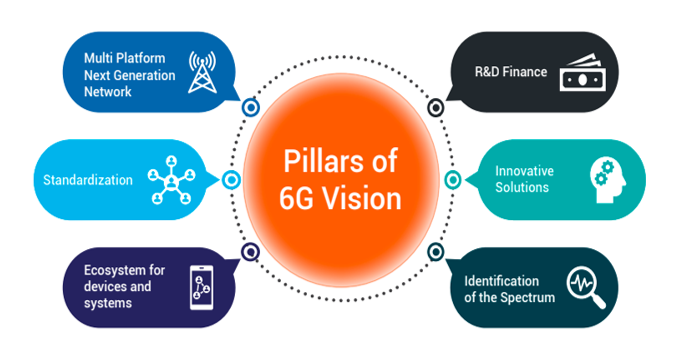
- 10 Nov 2024
In News:
India aspires to lead the world in 6G technology by 2030 through the Bharat 6G Mission. This initiative builds upon the successful rollout of 5G, which reached 98% of districts in just 21 months.
Key Features of 6G Technology
- Terahertz (THz) Frequencies: 6G will utilize THz waves capable of transmitting significantly more data than 5G, offering ultra-fast data rates.
- Massive MIMO (Multiple Input Multiple Output): Supports a large number of devices and simultaneous connections using multiple antennas, improving data transmission and reception.
- Network Slicing: Creates specialized, smaller networks tailored to specific traffic types, such as video streaming or industrial automation.
- Enhanced Security: Incorporates advanced encryption and authentication protocols to safeguard sensitive data.
- Ultra-Reliable Low Latency Communication (URLLC): Ensures ultra-low latency, critical for applications like industrial automation, virtual reality (VR), and augmented reality (AR).
- Integrated Intelligent Reflecting Surfaces (IIRS): Enhances signal strength and quality, particularly in areas with poor reception.
- High-Speed Data Transfer: Supports data communication over hundreds of GHz or THz frequencies, facilitating faster transfer rates.
Government Initiatives for 6G Development
Bharat 6G Vision and Strategy
- Goal: To design, develop, and deploy 6G technologies, ensuring secure, intelligent, and pervasive global connectivity.
- Core Principles:
- Affordability, sustainability, and ubiquity aligned with the vision of Atmanirbhar Bharat (self-reliant India).
- Strategic Objectives:
- Promote R&D through startups, universities, and industries.
- Develop affordable 6G solutions and global IP contributions.
- Focus on transformative applications to enhance quality of life.
Technology Innovation Group (TIG) on 6G
- Established: November 1, 2021.
- Task Forces:
- Focus on multidisciplinary solutions, spectrum management, devices and networks, international standards, and R&D funding.
Bharat 6G Alliance
- A collaborative effort between Indian industry, academia, and research institutions to develop 5G advancements, 6G products, and patents.
- Global Alignment: Partners with organizations like the Next G Alliance (US), 6G Flagship (Finland), and South Korea’s 6G Forum.
Applications of 6G Technology
Application Area
Description
Healthcare
Real-time patient monitoring and AI-connected devices.
Agriculture
IoT and AI-driven predictive systems for crop health and irrigation.
Defense & Internal Security
Enhanced surveillance, communication, and unmanned operations.
Disaster Response
High-volume communication for emergency coordination.
Transportation
Ultra-low latency for urban air mobility and traffic management.
Education
High-speed remote learning, immersive AR/VR-enabled classrooms.
Metaverse
3D holographic displays and seamless virtual interactions.
Industrial Automation
Smart factories with enhanced operational efficiency through real-time data.
Smart Cities
Efficient urban infrastructure and real-time monitoring using IoT.
Entertainment & Media
Higher-quality streaming, immersive content delivery.
Environmental Monitoring
Real-time data collection for resource management and conservation.
Challenges in 6G Development
- Technical Complexity: Development of advanced components and subsystems makes 6G technology highly complex.
- Infrastructure Deployment: Significant investment and regulatory support are required for the necessary infrastructure upgrades.
- Spectrum Allocation: The limited availability of spectrum poses challenges in balancing competing demands for bandwidth.
- Security Concerns: High-speed data transmission increases vulnerability to cyber threats, necessitating robust security protocols.
- Standardization Issues: Achieving global consensus on standards for 6G interoperability can be slow and contentious.
- Global Collaboration: Effective international cooperation is critical for technological and regulatory alignment.
Conclusion
India’s Bharat 6G Mission represents a visionary approach to maintaining technological leadership in the rapidly evolving global digital landscape. By investing in research, fostering international collaborations, and pursuing policies aligned with Atmanirbhar Bharat, India can harness 6G to fuel socio-economic growth and strengthen global connectivity.
Fortified Rice: A Strategic Initiative to Combat Micronutrient Deficiencies in India
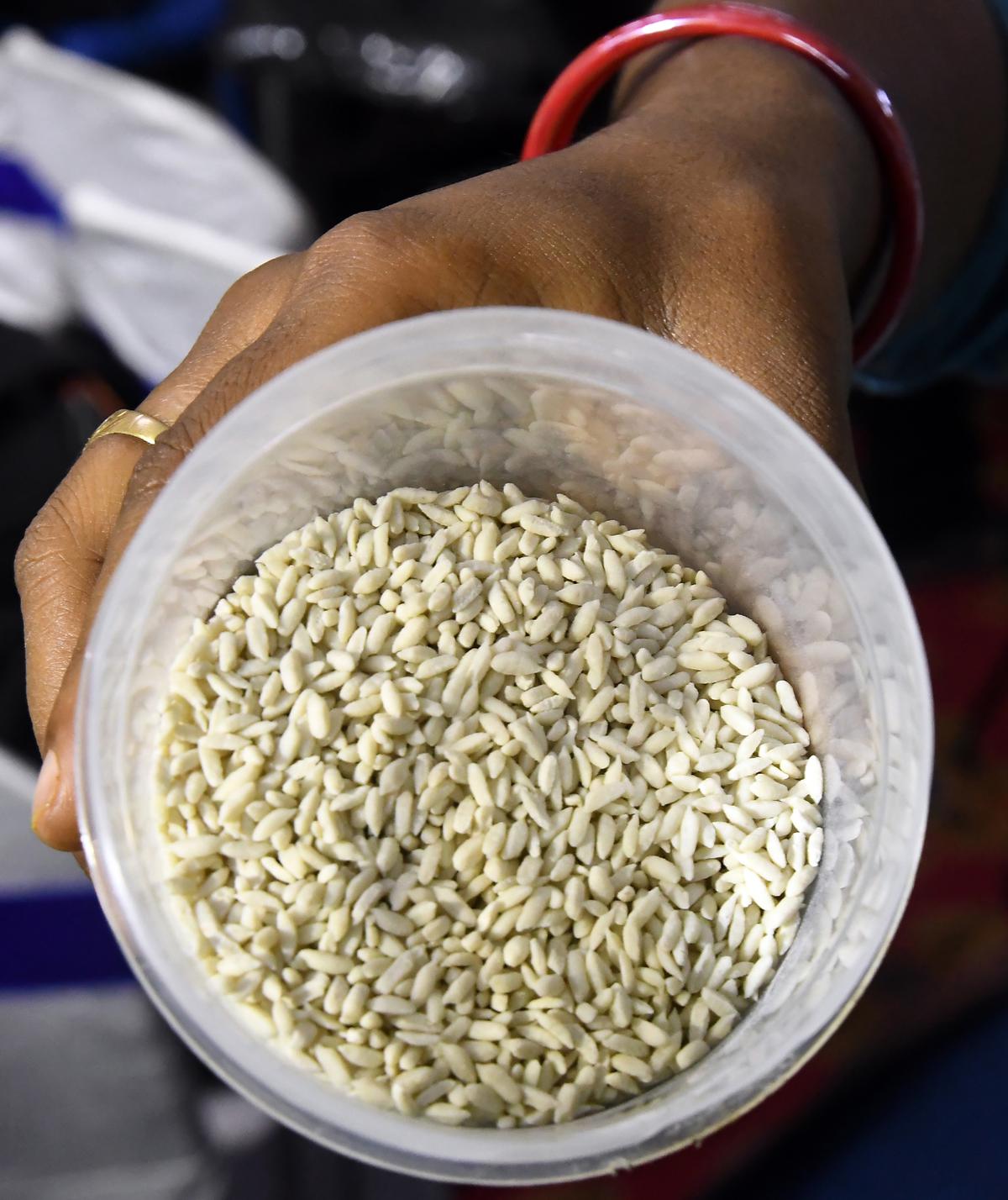
- 21 Oct 2024
Introduction to Rice Fortification
Fortification refers to the process of adding micronutrients, such as vitamins and minerals, to food products that are not naturally present in sufficient amounts. In India, rice fortification has been identified as a cost-effective strategy to address widespread micronutrient deficiencies, particularly iron, folic acid, and vitamin B12. These deficiencies contribute to various health problems such as anemia, stunted growth, and cognitive impairments, particularly among women and children.
Background: India’s Fortified Rice Program
India has one of the highest rates of malnutrition globally, with anemia affecting every second woman and every third child in the country. Rice is a staple food for approximately 65% of India’s population, making it an ideal vehicle for micronutrient fortification. In 2019, the Indian government launched the rice fortification initiative as part of its broader strategy to improve public health and nutrition outcomes.
In July 2024, the Union Cabinet approved the continuation of the fortified rice program under key welfare schemes, including the Pradhan Mantri Garib Kalyan Anna Yojana (PMGKAY). This initiative will run until December 2028, and aims to make fortified rice a common feature of the Public Distribution System (PDS), mid-day meals, and anganwadis, reaching millions of beneficiaries across the country.
Fortification Process and Standards
The fortification of rice involves adding essential micronutrients—iron, folic acid, and vitamin B12—to rice grains. This can be done by either coating the rice with a premix or producing extruded rice kernels that are enriched with nutrients before blending them with regular rice. According to the Food Safety and Standards Authority of India (FSSAI), every kilogram of fortified rice should contain:
- Iron: 28 mg - 42.5 mg
- Folic Acid: 75 - 125 micrograms
- Vitamin B12: 0.75 - 1.25 micrograms
Scientific Safety and Efficacy of Iron Fortified Rice
The safety and effectiveness of iron-fortified rice have been under close scrutiny. Concerns were raised about whether individuals with hemoglobinopathies (such as Thalassemia and Sickle Cell Anemia) might be adversely affected by the added iron. Initially, the packaging of fortified rice carried health advisories for these individuals, but a 2023 scientific review and committee assessment concluded that there were no health risks from iron fortification for such individuals. The iron levels in fortified rice are minimal compared to the levels of iron patients with Thalassemia receive through blood transfusions, and Sickle Cell patients have naturally elevated levels of hepcidin, which limits iron absorption.
Following the review, the advisory was removed in July 2024, aligning with global practices where similar advisories are not required in countries that fortify rice.
Expansion of Fortified Rice Infrastructure
India’s rice fortification program has scaled up rapidly. As of 2024, over 21,000 rice mills have installed blending equipment to produce fortified rice, with a monthly capacity of 223 lakh metric tons (LMT). Additionally, 232 premix suppliers have the capacity to produce 75 LMT annually, significantly surpassing the requirements of the PMGKAY, which mandates the procurement of 5.2 LMT of fortified rice annually.
To ensure quality, NABL-accredited labs conduct rigorous testing on fortified rice products across the country. This infrastructure expansion supports the goal of fortifying rice distributed through welfare schemes and public safety nets.
Global Context: Rice Fortification Worldwide
Fortification of staple foods, including rice, is a globally recognized practice aimed at addressing micronutrient deficiencies in populations with limited access to diverse diets. As of 2024, 18 countries globally are actively involved in rice fortification. The World Health Organization (WHO) has endorsed rice fortification as an effective means to combat iron deficiency anemia, especially in countries like India where rice is a primary dietary staple.
Countries such as the U.S. have been fortifying rice since the late 1950s, and WHO recommends iron fortification where rice constitutes a major part of the diet.
Benefits of Iron Fortification of Rice
- Improved Cognitive Development: Iron is crucial for brain development and cognitive function. Adequate iron intake during early childhood is linked to better cognitive performance, which can improve educational outcomes.
- Enhanced Maternal and Infant Health: Iron deficiency during pregnancy is associated with risks such as maternal anemia and poor fetal development. Fortified rice helps reduce these risks by improving iron intake among pregnant women.
- Reduction in Prevalence of Anemia: Regular consumption of fortified rice has been shown to improve hemoglobin levels in populations suffering from iron deficiency anemia. This has been particularly evident in pilot districts in India, where iron fortification has led to improved health outcomes among both adults and children.
Potential Risks and Challenges
- Bioavailability of Iron: Iron bioavailability refers to the body's ability to absorb and utilize the iron from fortified foods. While iron from rice is absorbed to a lesser extent compared to meat, its fortification still contributes significantly to overall iron intake, especially in populations that consume rice regularly.
- Overload of Iron: Excessive iron intake can lead to iron toxicity, causing oxidative stress, liver damage, and increased risk of infections. Special care must be taken to ensure that individuals with conditions like hemochromatosis or those receiving other forms of iron supplementation do not experience iron overload.
- Technical and Social Barriers: While India has made substantial progress in infrastructure for rice fortification, challenges remain in ensuring the quality, stability, and safety of fortified rice. Moreover, ensuring affordability, accessibility, and acceptance of fortified rice among diverse population groups remains a critical concern.
Future Directions for Rice Fortification
- Nanotechnology for Enhanced Iron Absorption: To improve the bioavailability of iron, exploring the use of nanotechnology could help encapsulate iron particles, enhancing their absorption and effectiveness in the body.
- Biofortification Integration: Combining iron fortification with biofortification—the process of breeding rice varieties with naturally higher iron content—could provide a sustainable solution for long-term micronutrient deficiency.
- Public-Private Partnerships: To scale up rice fortification, there is a need for collaborations between the government, private sector, and non-governmental organizations (NGOs). These partnerships can help improve distribution networks, technology development, and financial sustainability.
- Continuous Monitoring and Evaluation: Rigorous evaluation studies, such as those being conducted by the Indian Council of Medical Research (ICMR) and NITI Aayog, will help assess the effectiveness of the rice fortification program and ensure its continuous improvement.
Conclusion: A Path to Nutritional Security
The fortification of rice in India represents a powerful tool to address the growing problem of micronutrient deficiencies, particularly iron deficiency anemia, which affects millions of people, especially women and children. By ensuring that fortified rice is integrated into government welfare schemes, India can take a significant step toward improving public health and achieving its nutritional goals.
While challenges related to bioavailability, iron overload, and implementation remain, ongoing research, technological innovation, and collaborative efforts can help mitigate these risks. As India continues to expand its rice fortification program, it offers a model for other countries facing similar nutritional challenges, reinforcing the role of fortified foods in achieving global sustainable development goals (SDGs) related to health and nutrition.
MeitY relaxes AI compute procurement norms for Start-ups
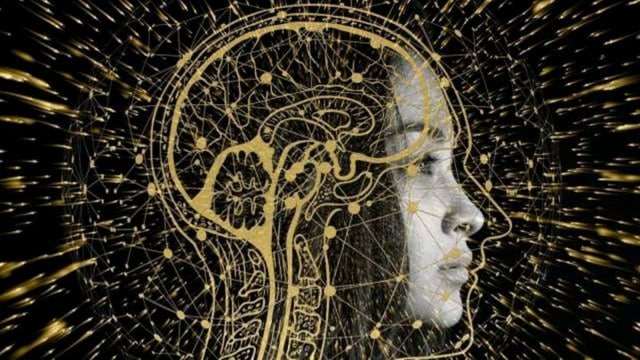
- 09 Oct 2024
Overview
The Ministry of Electronics and IT (MeitY) has relaxed certain provisions related to the procurement of computing capacity for artificial intelligence (AI) solutions. This decision is part of the Rs 10,370 crore IndiaAI Mission, aimed at enhancing the country’s AI capabilities.
Key Relaxations
Annual Turnover Requirements
- Primary Bidders: Turnover requirement reduced from ?100 crore to ?50 crore.
- Non-Primary Consortium Members: Requirement halved from ?50 crore to ?25 crore.
Computing Capacity Adjustments
- The performance threshold for successful bidders has been revised:
- FP16 Performance: Reduced from 300 TFLOPS to 150 TFLOPS.
- AI Compute Memory: Reduced from 40 GB to 24 GB.
Importance of the Changes
These adjustments respond to concerns raised by smaller companies about exclusionary requirements that favored larger firms. The aim is to create an inclusive environment that allows start-ups to participate in the AI landscape.
AI Mission Goals
- Establish a computing capacity of over 10,000 GPUs.
- Develop foundational models with capacities exceeding 100 billion parameters.
- Focus on priority sectors such as healthcare, agriculture, and governance.
New Technical Criteria
- Companies must demonstrate experience in offering AI services over the past three financial years.
- Minimum billing of ?10 lakh required for eligibility.
Local Sourcing Requirements
- Components for cloud services must be procured from Class I or Class II local suppliers as per the ‘Make in India’ initiative:
- Class I Supplier: Domestic value addition of at least 50%.
- Class II Supplier: Local content between 20-50%.
Data Sovereignty and Service Delivery
- All AI services must be delivered from data centres located in India.
- Data uploaded to cloud platforms must remain within India's sovereign territory.
Implementation Strategy
- The Rs 10,370 crore plan will be implemented through a public-private partnership model.
- 50% viability gap funding has been allocated for computing infrastructure development.
Conclusion
The relaxations in AI compute procurement norms aim to support the growth of start-ups in India, fostering an environment conducive to innovation in artificial intelligence. With these changes, smaller companies are better positioned to contribute to the country's ambitious AI goals.
How India can harness the power of AI to become a Trailblazer

- 08 Oct 2024
Introduction
India stands at the forefront of an AI revolution, poised to leverage its unique position for unprecedented growth and innovation. With a robust economic outlook, the nation is ready to transform its AI capabilities.
Economic Landscape
Projected Growth
- Nomura estimates India's economy will grow at an average rate of 7% over the next five years, surpassing the IMF's global growth forecast of 3.2% for 2024.
- Hosting the G20 and Global Partnership on AI meetings in 2023 has created a favorable geopolitical environment.
Market Potential
- India’s AI market is expected to reach $17 billion by 2027, with a growth rate of 25-35% annually from 2024 to 2027 (Nasscom).
- The country leads Asia Pacific in the use and adoption of Generative AI, with significant engagement from students and employees.
The Role of Industry
Driving Transformation
- Similar to historical industrial leaders, India Inc has the potential to drive significant change across various sectors.
- The goal is to transition from participation to leadership in the global AI ecosystem.
Sector-Specific Strategies
- Industries must align AI capabilities with specific sectoral goals by mapping challenges, opportunities, and ambitions.
Case Study: Logistics Sector
Historical Inefficiencies
- A decade ago, the logistics sector in India faced significant inefficiencies.
AI Integration
- Traditional AI introduced automation and basic forecasting. Companies like PandoAI have leveraged AI to consolidate supply chain data and provide valuable analytics.
- The integration of Generative AI can further enhance predictive capabilities and innovative solutions.
Infrastructure and Investment
Current Challenges
- India generates 20% of the world’s data but has only 2% of global data centers, limiting technological advancement.
Government Initiatives
- Plans to procure 10,000 GPUs in the next 18-24 months and a National Semiconductor Mission to establish a domestic chip industry.
Need for Industry Investment
- Collaboration between government and industry is crucial to meet the growing demands for computing power.
Talent Development
Workforce Dynamics
- Hiring of AI talent increased by 16.8% in 2023, indicating a rising focus on AI capabilities.
- Many Indian-origin AI professionals work for international companies, highlighting the need for local opportunities.
Educational Initiatives
- Programs like FutureSkills PRIME should be expanded to enhance talent development in AI.
Ethical Standards and Governance
Importance of Trust
- Establishing trustworthy AI standards is essential for consumer confidence and sustainable operation.
- Challenges such as bias and data security require robust governance frameworks.
Operationalizing Ethics
- Develop AI governance frameworks addressing ethical concerns and data security.
- Ensure transparency in AI algorithms and decision-making processes.
- Promote inclusive AI development by engaging diverse perspectives.
- Invest in ethical AI research through collaborations with academic institutions.
Conclusion
India’s commitment to a strategic vision, substantial investment, and adherence to trustworthy AI practices can position it as a global leader in the AI landscape. This is a pivotal moment for India to harness AI's transformative power, paving the way for a new era of economic prosperity.
Drone Technology in Agriculture
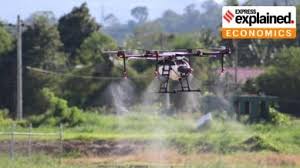
- 02 Sep 2024
In News:
Farmers in Bhagthala Khurd, Kapurthala, and Amritsar are increasingly using drones to apply pesticides to their maize and moong crops. Drones, also known as unmanned aerial vehicles (UAVs), are advanced flying machines that can be operated either autonomously or via remote control.
Drone Technology in Agriculture
While the use of drones in Indian agriculture is still emerging, it shows great potential. In Punjab, 93 out of the 100 drones provided to farmers by the Indian Farmers Fertiliser Cooperative (IFFCO) under the Centre’s ‘NAMO Drone Didi’ scheme are already in operation. Each drone, costing Rs 16 lakh, is equipped with a 12-litre water tank.
Benefits
- Health Protection: Drones minimize farmers' direct exposure to harmful pesticides, reducing the risk of health issues like cancer and kidney problems.
- Efficiency: Drones can spray an acre in just 5-7 minutes, significantly faster than the several hours required for manual application. They ensure a uniform application, which can enhance crop yields.
- Data Collection: Drone data helps pinpoint areas requiring attention, leading to better crop management and increased profits.
- Nano Fertilisers: Drones effectively handle nano fertilisers, ensuring even distribution of these small quantities that are difficult to spread manually.
- Pest Control: Drones enable timely application of pesticides during infestations of pests such as pink bollworms, locusts, and whiteflies.
- Environmental Benefits: Drones improve nutrient absorption from nano fertilisers by up to 90%, reducing runoff and pollution. Leaf-based application is also less polluting than soil-based methods.
- Water Conservation: Drones reduce water usage by up to 90% compared to traditional methods.
- Cost Reduction: They decrease the need for manual labor and reduce pesticide and chemical use, lowering overall costs.
- Additional Uses: Drones are also used to drop seed balls (a mix of soil and cow dung with seeds) for potential reforestation projects.
Challenges
- Job Loss: The use of drones may reduce demand for manual labor, affecting job opportunities for laborers.
- Knowledge and Training: Farmers may lack the necessary skills and training to operate drones effectively.
- Cost: The high cost of drones can be a significant barrier for many farmers.
- Regulatory Barriers: Regulatory challenges may complicate the adoption of drones in agriculture.
Initiatives
- Digital India Campaign: Aims to enhance digital infrastructure and provide training.
- Indian Council of Agricultural Research (ICAR): Promotes precision agriculture technologies, including drones.
- Production Linked Incentive (PLI) Scheme: Offers Rs. 120 crore (US$ 14.39 million) to incentivize domestic drone manufacturing and reduce import reliance.
- Sub-Mission on Agricultural Mechanization (SMAM): Provides financial aid to farmers purchasing drones, making technology more accessible.
- NAMO Drone Didi Scheme: Launched to empower women Self-Help Groups (SHGs) and provide access to modern agricultural technology.
- Support and Training: Efforts are underway to offer training and support to farmers to overcome adoption barriers.
Conclusion and Way Forward
Drone technology holds the promise of transforming agriculture by boosting efficiency, yields, and cost-effectiveness. In Punjab, where traditional manual methods have prevailed, drones offer a new approach to pesticide and fertiliser application. It is essential for farmers and policymakers to work together to address challenges and ensure that the benefits of drones are fully realized while mitigating any potential drawbacks.
What does spaceflight do to the human body?
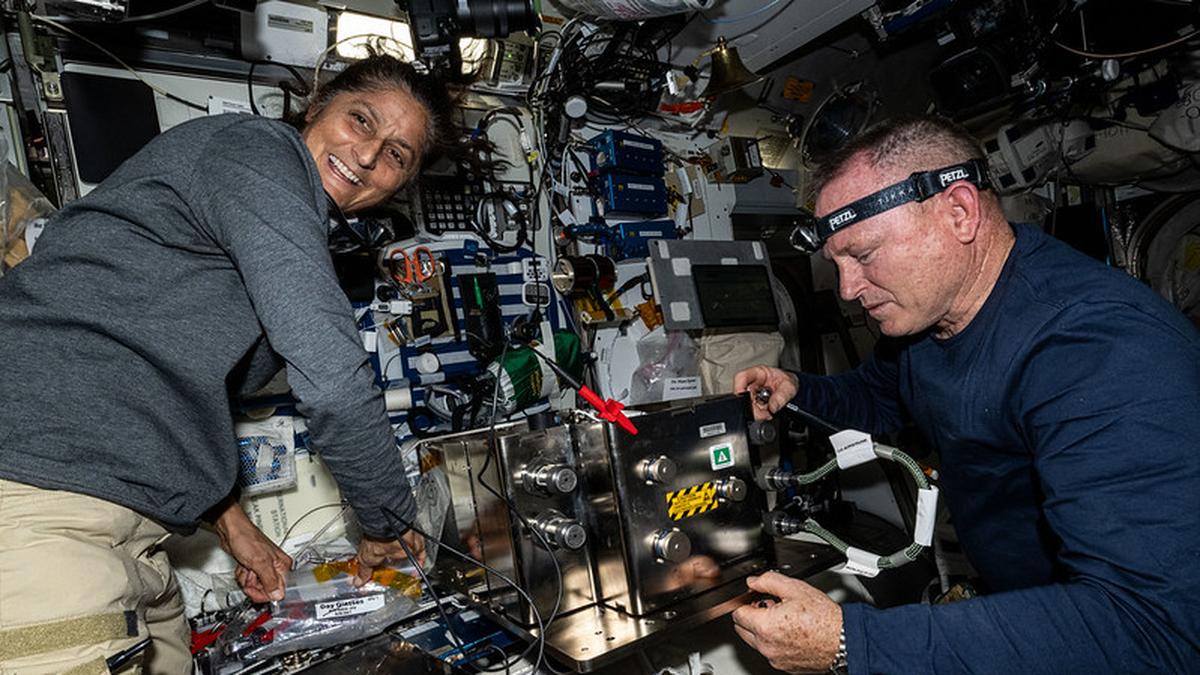
- 01 Sep 2024
In News:
- On August 24, 2023, NASA announced that Boeing’s Starliner crew capsule was deemed unsafe for the return of astronauts Sunita Williams and Barry Wilmore from the International Space Station (ISS).
- Williams and Wilmore’s stay onboard the ISS has been extended until February 2025, with their return planned via a SpaceX crew capsule in September 2024.
- Starliner will undock and return uncrewed.
Understanding Space
Definition and Characteristics
- What is Space?
- Space is defined as the area above the Karman line (100 km above sea level), transitioning from ‘earth-like’ to ‘space-like’ conditions.
- Microgravity Explained
- Astronauts experience microgravity due to the diminishing force of gravity, not complete absence, leading to various physiological effects.
Environmental Challenges
- Radiation in Space
- The Van Allen radiation belts, located above the Karman line, pose a significant challenge, exposing astronauts to charged particles.
- Historical research during the Apollo program determined that exposure levels in these belts are not harmful.
Effects of Space on the Human Body
Physiological Changes
- Bone Health: Microgravity leads to bone weakening, potentially causing renal stones due to excess mineral deposition.
- Digestive Issues: Food movement slows, contributing to potential weight gain.
- Eye Health: Spaceflight-associated neuro-ocular syndrome (SANS) affects about 20% of astronauts, with 70% of long-duration astronauts affected, causing vision impairment.
- Cardiovascular Effects: Reduced workload on the heart can result in muscle shrinkage.
- Muscle and Blood Changes: Muscle mass and strength decline; increased loss of red blood cells necessitates dietary adjustments.
Cognitive and Psychological Factors
- Balance and Orientation: Altered signals in microgravity challenge the brain's ability to maintain balance.
- Psychological Impacts: Isolation, fatigue, and stress from family separation contribute to mental health challenges.
Mitigating the Effects of Space
Strategies and Research
- Exercise and Routines: Strict exercise regimens and predictable routines are critical for maintaining astronaut health during missions.
- Nutritional Adjustments: Research is ongoing into how nutrients and drugs are metabolized in space.
- Monitoring and Countermeasures: Development of portable optical coherence tomography machines for SANS detection is underway, alongside potential countermeasures like lower body negative pressure and artificial gravity exposure.
Ongoing Research Initiatives
- Understanding Spaceflight Effects: The "space omics" studies aim to identify how space environments affect human biology, exemplified by NASA’s Twins Study.
- International Collaboration: Programs like Japan’s KAKENHI and Europe’s Space Omics Topical Team, along with U.S. research protocols, are exploring biological responses to space conditions.
Duration of Human Space Missions
Historical Context and Current Trends
- Increased Duration: The average time spent in space has risen from one month in the 1960s to six months in the 2020s.
- Current Missions
- Williams and Wilmore will potentially spend 256 days in orbit.
- Record holders: Valeri Polyakov (437 days), Frank Rubio (370 days), and Oleg Kononenko (over 1,000 days across missions).
Future Aspirations
- Long-Duration Missions: The shift from lunar missions to potential permanent moon bases and human missions to Mars presents new challenges in safety and health for astronauts.
INDIA'S STRATEGIC PUSH FOR A DOMESTIC SEMICONDUCTOR ECOSYSTEM
- 24 Sep 2024
Introduction
India is actively pursuing the establishment of a domestic semiconductor ecosystem to lessen dependence on imports and tackle global supply chain vulnerabilities. This initiative, launched under the Semiconductor Mission in 2021 with a USD 10 billion investment, is vital for national security, particularly in defense and telecommunications.
Current Status of the Semiconductor Industry in India
Market Overview
- 2022 Market Size: USD 26.3 billion
- Projected Growth: Expected to reach USD 271.9 billion by 2032, with a CAGR of 26.3%.
Import-Export Dynamics
- Imports: USD 5.36 billion in 2021; efforts are underway to reduce this reliance.
- Exports: USD 0.52 billion in 2022, marking the highest level to date.
Government Initiatives
- India Semiconductor Mission (ISM): Part of the Digital India Corporation, focused on developing a strong semiconductor ecosystem.
- Financial Support: Covers 50% of project costs for semiconductor and display manufacturing facilities.
- Semicon India Programme: Launched in December 2021 with ?76,000 crore (around USD 9.2 billion) dedicated to semiconductor manufacturing.
- FY24 Budget Increase: Allocated ?6,903 crore (approximately USD 833.7 million) for further development.
International Collaborations
- MoU with the European Commission: Aims to enhance semiconductor ecosystems.
- MoC with Japan: Focused on improving supply chain resilience in the semiconductor sector.
Importance of Semiconductors for India
Economic Growth and Industrial Development
- Semiconductors are crucial for enhancing India's electronics manufacturing, targeting a notable share of the projected USD 1 trillion global semiconductor market by 2030.
- The Semiconductor Mission is projected to generate 35,000 direct jobs and 100,000 indirect jobs, potentially raising electronics manufacturing to USD 300 billion by 2026.
National Security and Strategic Autonomy
- Essential for defense and telecommunications, semiconductors ensure reliable supplies for critical defense systems and secure communication networks.
Technological Self-Reliance and Innovation
- With around 65-70% of electronic components currently imported, primarily from China, initiatives aim to foster domestic innovation and reduce this reliance.
Global Supply Chain Integration
- The objective is to position India as a key player in the global electronics supply chain, increasing its current 3% share of the global electronics manufacturing value.
Job Creation and Skill Development
- The semiconductor industry is anticipated to drive job creation and skill development, enhancing STEM education and research in advanced technologies.
Challenges Facing India's Semiconductor Aspirations
Infrastructure Issues
- India faces significant infrastructure challenges, including unreliable power supply and water shortages that impact semiconductor production.
Talent Shortage
- There is a projected need for 250,000 to 300,000 skilled professionals in semiconductor fields by 2027.
High Manufacturing Costs
- Semiconductor manufacturing is capital-intensive, and operational costs in India are generally higher compared to established hubs like Taiwan and South Korea.
Global Supply Chain Vulnerabilities
- Global supply chain disruptions, exacerbated by events such as the Russia-Ukraine conflict, present risks to India's semiconductor goals.
Environmental Challenges
- The energy-intensive nature of semiconductor manufacturing raises concerns about its environmental impact, particularly regarding greenhouse gas emissions.
Competition from Other Emerging Markets
- India faces competition from countries like Vietnam and Malaysia, which are successfully attracting semiconductor investments with favorable conditions and incentives.
Strategies for Advancing India's Semiconductor Vision
Enhance Education and Training
- Expand semiconductor engineering programs and collaborate with global companies to develop relevant curricula and hands-on training.
Develop Domestic Chip Design Capabilities
- Invest in chip design by establishing dedicated centers in technology hubs to encourage innovation.
Build a Comprehensive Supply Chain
- Create a robust domestic supply chain by attracting investments across all segments, from raw materials to advanced packaging.
Establish a Sovereign Semiconductor Fund
- Launch a dedicated fund for semiconductor projects to provide long-term investment and reduce reliance on foreign funding.
Implement a "Chip Diplomacy" Approach
- Use India's geopolitical position to negotiate technology transfers and partnerships with leading semiconductor nations.
Launch a "Green Semiconductor" Initiative
- Aim to become a leader in sustainable semiconductor manufacturing by minimizing environmental impacts.
Create a National Semiconductor Commons
- Establish shared infrastructure for research and prototyping to lower barriers for startups and promote innovation.
Conclusion
To fulfill its semiconductor aspirations, India must enhance education and training, develop a strong supply chain, and foster strategic collaborations. By addressing infrastructure challenges and skill gaps while promoting sustainable practices, India can secure its position as a significant player in the global semiconductor industry and strive for technological self-reliance.
The problem with India’s science management (The Hindu)
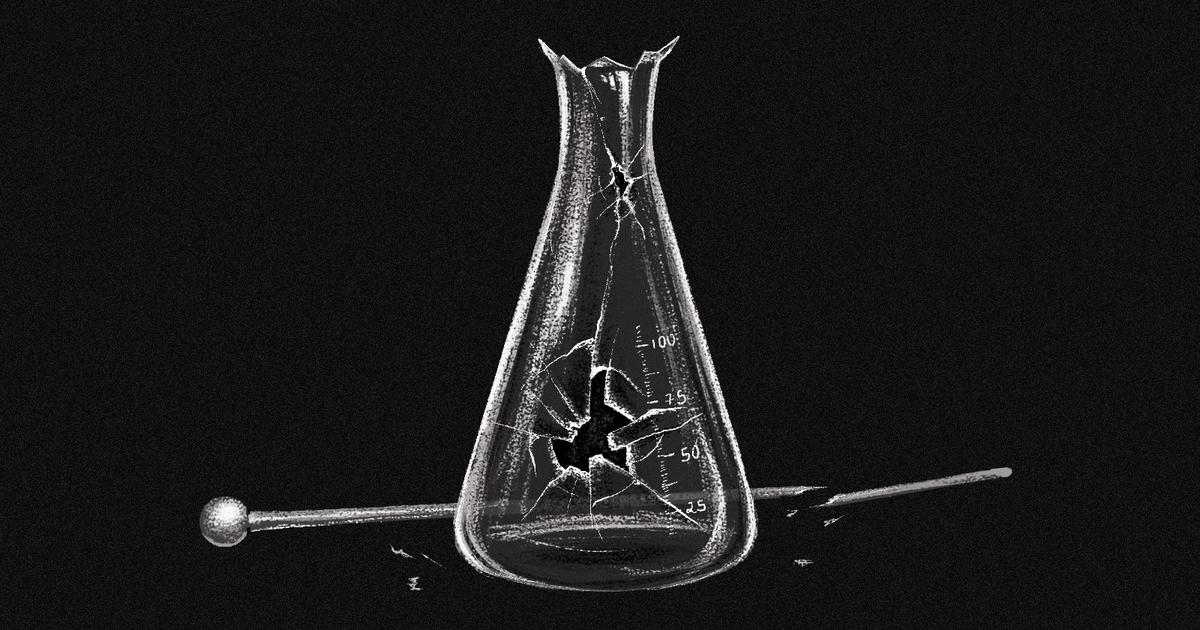
- 20 Jan 2024
Why is it in the News?
As India remoulds its scientific establishment, the utility of scientists being given administrative tasks needs to be questioned.
Context:
- Sustained economic progress which can satisfy national ambition is invariably fuelled by scientific advances translated into deployable technologies.
- This has been the inevitable global experience since the onset of the Industrial Revolution.
- The government is overhauling India’s science establishment, which includes setting up the new National Research Foundation (NRF) and restructuring the Defence Research and Development Organisation (DRDO).
- In this scenario, a frank assessment of the current administrative ability to simultaneously optimise Indian science’s efficiency and resilience is necessary.
What are the Problems with India’s Scientific Advancement?
India has a long and rich history of scientific innovation. However, in recent years, the country's science management has come under increasing scrutiny. There are several problems with India's science management including:
- Lack of Funding in Research and Development (R&D): One of the most pressing issues is a lack of funding.
- India spends a relatively small percentage of its GDP on research and development, compared to other developed countries.
- For instance, India allocates only about 0.7% of its GDP to R&D, a considerably lower figure compared to global leaders like the United States (3.5%) and China (2.4%).
- This lack of funding has led to a brain drain of talented scientists, who are leaving India in search of better opportunities.
- India spends a relatively small percentage of its GDP on research and development, compared to other developed countries.
- Budgetary Challenges: The modest commitment to R&D stems from broader budget constraints, competing priorities, and a historical emphasis on immediate socio-economic needs.
- This presents a challenge in fostering a robust scientific ecosystem on a limited budget.
- Lack of Coordination: Another problem with India's science management is a lack of coordination.
- There are many different government agencies and departments that are involved in science and technology, but there is often a lack of communication and cooperation between them.
- This can lead to duplication of effort and a waste of resources.
- Inadequacies in Budget Allocation by Scientific Administration: The current scientific administration struggles to identify and invest in high-impact projects.
- For instance, in 2022, the Indian Space Research Organisation ranked eighth in space launches, lagging in key technologies.
- Similar setbacks are evident in nuclear energy, genomics, robotics, and artificial intelligence.
- Lack of Strategic Planning and Execution: Beyond expenditure, the challenge extends to strategic planning and execution of scientific projects.
- Failure to adapt swiftly to emerging technologies and allocate resources judiciously has resulted in India falling behind in crucial fields.
- Inconsistent Long-Term Funding: A major concern is the absence of consistent long-term funding for vital projects, especially when faced with occasional setbacks.
- Steady funding, despite occasional failures, is crucial for a resilient and effective scientific management system.
- Finally, India's science management is often criticized for being too bureaucratic. The process of getting funding for research projects can be long and complex, and it can be difficult for scientists to get the support they need to succeed.
The Role of Senior Scientists in India’s Science Administration:
- Diverse Responsibilities Impacting Focus: Senior scientists in India often juggle multiple responsibilities, including academic pursuits, administrative duties, and leadership positions.
- This dispersion of focus can lead to inefficiencies and a lack of dedicated attention to critical administrative tasks.
- Lack of Administrative Skills: The assumption that successful scientists can seamlessly transition into effective administrators overlooks the distinct skills required for scientific work versus administration.
- Managing institutions, allocating resources, and making organizational decisions demand specific skills not necessarily possessed by accomplished scientists.
- Insufficient Training for Administrative Roles: Inadequate training makes it challenging for scientists to excel in administrative roles.
- Tasks like metric selection, conflict resolution, and setting priorities require skills not inherently developed through scientific training.
- Administration involves translating policy into outcomes, a skill not typically prioritized in scientific training.
- Conflicts of Interest and Quality Control Issues: The dual roles of scientists as academics and administrators can result in conflicts of interest within institutions.
- Academic rivalries, bureaucratic challenges, and compromised quality control may emerge, leading to issues like plagiarism, unethical publication practices, and compromised scientific outcomes.
- Nationwide Transfer System Absence: The absence of a nationwide transfer system for scientists and science administrators exacerbates issues such as competition and egotism.
- The lack of mobility within the system can contribute to internal divisions and hinder the progress of scientific careers and projects.
- Internal Control Challenges: Allowing individuals within the system to regulate it can lead to clear drawbacks, impacting the impartiality and effectiveness of science administration in India.
Challenges in India's Science Administration: A Historical Perspective
- Concentration of High-End Equipment: Economic constraints post-independence led India to concentrate on high-end scientific equipment, notably in institutions like the IITs.
- This concentration birthed gatekeepers, controlling access to critical resources and establishing a hierarchical structure where a few institutions wielded disproportionate influence.
- Gatekeepers and Institutional Captures Concept: Over time, these gatekeepers solidified their positions, accumulating power, government support, and institutional control.
- This system created an environment where young scientists navigated a complex web of influence, paying tributes to those controlling vital resources.
- Impact on Scientific Careers: The gatekeeping system not only influenced resource access but also shaped career trajectories.
- The nexus between institutional power and individual careers became pivotal, with appointments, awards, and international recognition often tied to maintaining favourable relations with gatekeepers.
- Normalization of Unethical Practices: The gatekeeping system has normalized unethical practices within Indian science.
- High plagiarism rates, paid publications in questionable journals, and undisclosed dealings for government funding have become ingrained, compromising the ethical standards of scientific research.
- Stifling Genuine Scientific Outcomes: This erosion of ethical standards doesn't just compromise research quality but stifles genuine scientific outcomes.
- Scientists in conflict with this system face hurdles, hindering promising careers and perpetuating a culture where personal connections often outweigh merit.
A Comparative Analysis of the U.S. Model and Indian Science Administration:
- U.S. Model: In the U.S., scientists chosen for administrative roles are identified early in their careers and undergo targeted training for managerial tasks.
- The emphasis is on maintaining a distinct separation between scientific pursuits and administrative responsibilities.
- Indian Scenario: In contrast, India's science administration traditionally involves senior scientists taking up administrative roles without a clear separation between scientific and administrative functions.
- This integrated approach poses challenges, as the skill sets needed for effective scientific research often differ significantly from those crucial for efficient administration.
Conclusion
As India pursues economic and strategic progress, challenges in science management hinder its research and development, causing a lag in innovation compared to other developed nations. To remedy this, increasing funding for research and development is crucial, along with enhancing coordination among government agencies and streamlining the funding process for research projects. By addressing these issues, India has the potential to emerge as a global leader in science and technology, bringing substantial benefits to its economy and society.
